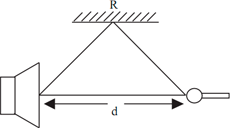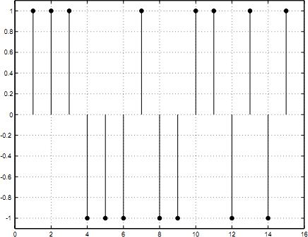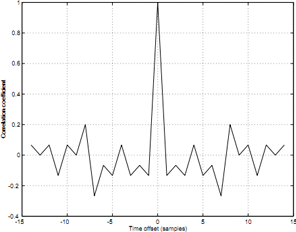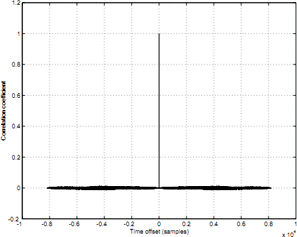TDS and MLS impulse response techniques
A bit of foreword
Looking ahead a bit, I’ll say that having shoveled a decent share of the Russian-language segment of the Internet, I could not find an adequate description of the TDS and MLS methods for measuring the impulse characteristics of the room. Therefore, I decided to fill such a gap. If this article does not claim to be adequate, then just let it stay here.
- What is all this all about?
In general, the impulse response is the response of the system to the action in the form of a delta function (Dirac function). Of course, in reality, it is impossible to obtain a delta function, because we mean by it a very short and very large amplitude signal. In the context of room acoustics, the imitation of the delta function can be called a banal hand, the sound of a bursting ball or a shot of a starting pistol.
- Why is it necessary?
- Using the impulse response, you can determine many acoustic parameters of the room (for example, the reverberation time or the signal-to-noise ratio) and electro-acoustic systems (for example, the frequency response of the path using the Fourier transform);
- Having the impulse response of the room, you can very easily simulate the sound of any sound in this room. For example, check how you will be heard in the hall in which you will read the report tomorrow.
- How is this possible?
This is possible thanks to the convolution operation. What it is, where and with what it is eaten is very well described here (it is recommended to read it for a better understanding).
Mini FAQ is over, let's get down to business
Delta function
As mentioned above, the easiest way to measure the impulse response of a room is, for example, to shoot from the starting gun at the point where the announcer / performer should be placed, and simply record the sound that will reach the listener’s location. However, for this method, there are a number of problems:
- experiments with test signals in the form of the sound of a pistol shot are not very repeatable;
- the range of characteristics they produce is often very complex;
- the high peak power they produce can create non-linearities that can change the test result;
- if we try to replace the gun with a loudspeaker and play with it a certain impulse, we can get a problem in which the necessary amplitude power does not enter the room.
For these reasons, the impulse response is often measured indirectly - through a technique that uses an effect that is not an impulse per se, but a signal that is sufficiently extended over time.
Tds
TDS (Time Delay Spectrometry - time delay spectrometry) is a technique for measuring the impulse characteristics of electro-acoustic systems (as well as classrooms) in rooms with noticeable reverberation. So TDS allows you to get three-dimensional (time-energy-frequency) graphs of impulse characteristics. Although the conceptual and mathematical foundation of TDS has been known for quite some time, this technique itself is usually attributed to the achievements of Dr. Richard Hazer, who first published it in 1967 in the Journal of the Audio Engineering Society.
Consider the use of TDS for measuring the impulse characteristics of electro-acoustic systems. Since measurements are made in a room with reverberation, each wave emitted by the speaker will be reflected from the surfaces of the room. Therefore, only direct waves must be taken into account, i.e. you need to filter out extraneous sounds made by the room.

The response is recorded using a band-pass filter tuned to a given frequency. With a change in the radiation frequency, the filter is also reconfigured to a new frequency, and the operation is repeated. Since it is necessary to measure the loudspeaker response for a given frequency range (for example, from 20 Hz to 20 kHz - the auditory range of a person), using this approach, it will be necessary to repeat the experiment for each frequency in the range.
One way to circumvent this obstacle is to use a linearly frequency modulated signal (LFM) as an input . The LFM signal starts from zero frequency and linearly “unfolds” to higher frequencies.
Since the input signal is “deployed,” the filter must also “unfold” at the same speed. However, the time taken for the wavefront to reach the microphone must be taken into account. This time delay is usually constant, since the microphone and speaker do not move relative to each other. The time delay is associated with a frequency offset, since the center frequency of the bandpass filter is always slightly behind the frequency of the signal emitted by the speaker.
We expand this technique to measure the impulse characteristics of rooms with reverberation noise. To do this, you just need to slow down the LFM signal so that acoustic dispersions from the surfaces of the room seep through the tracking filter. In fact, the goal is to achieve stationary equilibrium at each frequency in the room before switching to a new frequency.
Since it is assumed that the system under study is linear and time-invariant, it can be assumed that each reflecting surface is an image of a loudspeaker. A room is a collection of images, each of which has its own unique transfer function, which is described by the product of the spectral dispersion energy S (ω) and the phase component e- jωt. The impulse response is the sum of all single responses:


The TDS method requires that the duration of the test signal be much longer than the duration of the response of the system. Thus, if the measured room has a reverberation time of one second, the duration of the test signal should be at least 10 seconds.
To obtain the impulse response, you can use the LFM signal of any duration, resulting in a greater signal-to-noise ratio in a noisy room. The disadvantage is that the system under test (i.e. the room) must be linear and stationary in time (i.e. there should be, for example, no air flow).
Mls
MLS (Maximum length sequence) is the name in the signal processing of a periodic pseudo-random sequence of values 1 and -1. The method has the same name in terms of computational cost for measuring the impulse response of a linear system using an MLS sequence as an input signal. The period of such a signal is:

N is the order of the sequence, i.e. the number of variable registers used to generate the sequence.

MLS sequence (N = 15)
The result of the autocorrelation function of such a sequence is a delta function. This means that the impulse response of the room is estimated using a cross-correlation function between the original MLS signal and the signal at the receiving point.

Autocorrelation function of the MLS sequence (N = 15)

Autocorrelation function of the MLS sequence (N = 8191)
The cross-correlation function is calculated using the Walsh-Hadamard transform, a special case of the generalized Fourier transform, in which the system of Walsh functions is the basis. This family of functions forming an orthogonal system takes only 1 and -1 values over the entire domain.
A convenient measure of how much energy per unit time is in the signal is the peak factor - the ratio of the signal amplitude to average:

Ideally, the peak factor should be as close to unity as possible. Since the amplitude and average values are equal, it is impossible to have a larger energy value per unit time, therefore, we can say that the input signal is as similar as possible to an ideal pulse.
The peak factor of the MLS sequence is very close to unity, so it makes sense to use this type of signal as an input to achieve a high signal-to-noise ratio during measurements. Therefore, MLS is well suited for experimentation in noisy rooms.
The main requirement of the MLS technique is the linearity of the system under test. The impact should be at least as long as the response. The system must also be stationary during the duration of the sequence.
Examples
Delta function

Listen
Tds

Listen
Mls

Listen
Basement
- Sound System Measurements using Time Delay Spectrometry
- Impulse Response Measurements Using All-Pass Deconvolution. David Griesinger, Lexicon, Inc. Waltham, Massachusetts 02154, USA
- Introduction to Sound Recording. Geoff Martin, B. Mus., Ph. D., March 14, 2004
PS: there is an interesting site , which is a collection of impulse characteristics of various rooms that are downloaded by users. There you can also listen to how vocals or drums will sound in the room. Unfortunately, the resource has fallen so far. And it is not clear when he rises.
